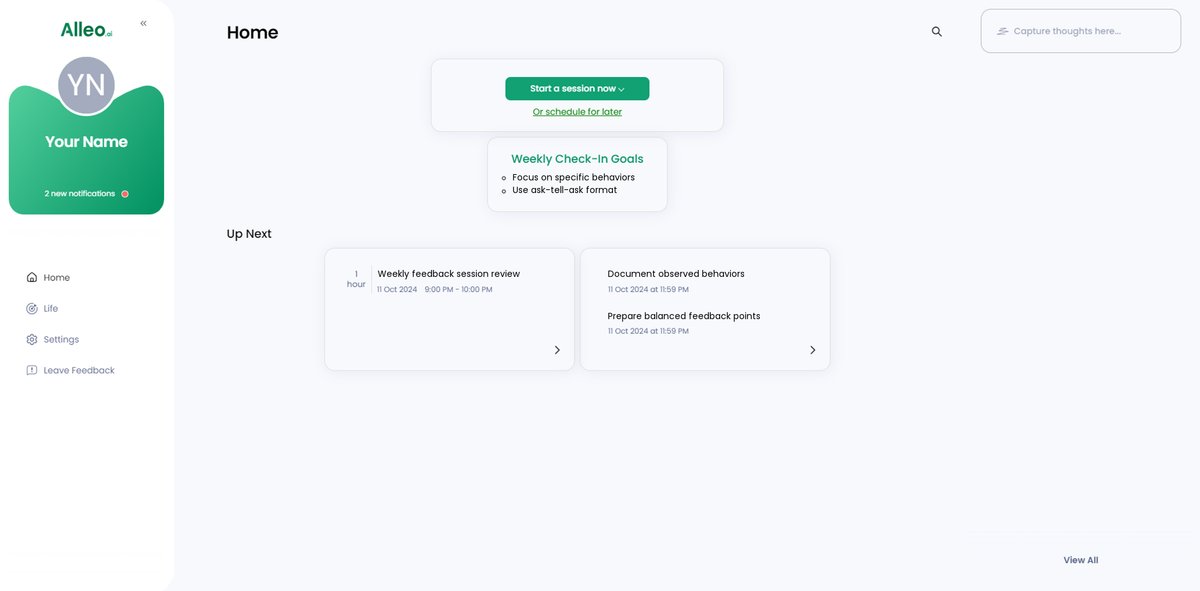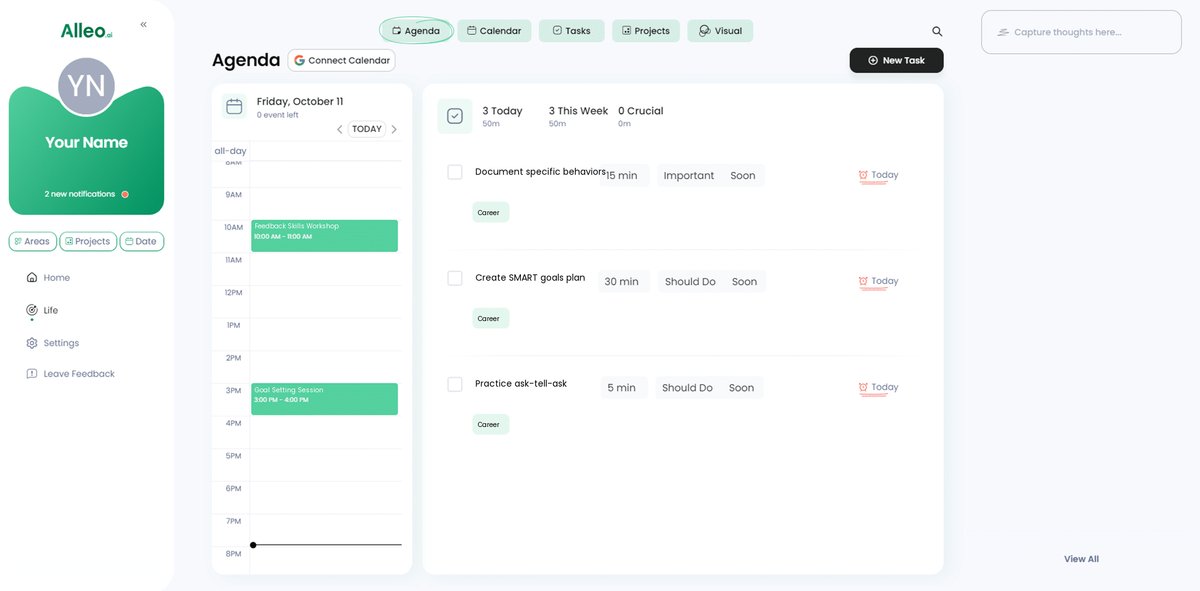Master the Art of Constructive Feedback: 5 Actionable Steps Every Manager Needs to Know
Ever felt that giving feedback is like walking a tightrope? Providing actionable constructive feedback can be challenging, especially for those new to leadership roles.
As a life coach, I’ve helped many professionals navigate these challenges. I often see young professionals struggle with providing constructive feedback that’s actionable and specific. Developing effective communication techniques for managers is crucial for employee performance improvement strategies.
In this article, you’ll discover strategies to give feedback that promotes growth and improvement. We’ll cover techniques like focusing on behaviors, using structured formats, and balancing positive and negative feedback in leadership. These actionable constructive feedback tips will help you master constructive criticism in the workplace.
Let’s dive into these positive feedback methods for team leaders and actionable feedback examples for supervisors.

The Challenge of Constructive Feedback
Navigating the world of feedback can be daunting. Many clients report that their feedback tends to be overly critical, missing out on actionable constructive feedback tips that can lead to real improvement.
This is a common issue in the workplace. Without specific guidance, feedback can feel like a personal attack rather than helpful constructive criticism in the workplace.
Consider a young professional who only received vague criticism. It left them feeling demotivated and unsure of how to improve, highlighting the importance of effective communication techniques for managers.
In my experience, specific and actionable feedback is crucial for growth. It provides a clear path for improvement, transforming criticism into a constructive tool for employee performance improvement strategies.

Key Steps to Effective Feedback
Overcoming this challenge requires a few key steps. Here are the main areas to focus on to make progress with actionable constructive feedback tips:
- Focus on Specific Behaviors, Not Personality: Observe and document specific behaviors needing improvement, a crucial aspect of constructive criticism in the workplace.
- Use the Ask-Tell-Ask Feedback Format: Start by asking for the employee’s perspective, then provide clear feedback, utilizing effective communication techniques for managers.
- Provide Actionable Recommendations for Improvement: Suggest specific actions and offer resources and support, essential for employee performance improvement strategies.
- Balance Criticism with Positive Recognition: Identify and acknowledge strengths alongside areas for improvement, incorporating positive feedback methods for team leaders.
- Set SMART Goals for Employee Development: Define specific, measurable, achievable, relevant, and time-bound goals, a key aspect of developing a feedback culture in organizations.
Let’s dive into these actionable constructive feedback tips!
1: Focus on specific behaviors, not personality
It’s essential to focus on behaviors rather than personality traits when giving actionable constructive feedback to ensure it is effective and improves employee performance.
Actionable Steps:
- Document instances of specific behaviors that need improvement.
- Example: “Record occasions where deadlines are missed due to lack of communication.”
- Use objective language to describe these behaviors, a key aspect of effective communication techniques for managers.
- Example: “Instead of saying ‘You’re unreliable,’ say ‘The last three reports were submitted late.'”
- Provide context to the feedback, which is crucial for constructive criticism in the workplace.
- Example: “Explain how the missed deadlines affect the team’s productivity.”
Explanation: Focusing on specific behaviors helps provide clear and actionable constructive feedback tips. This approach ensures the recipient understands the exact actions that need improvement without feeling personally attacked, supporting employee performance improvement strategies.
According to Deel, specific and clear feedback is more effective than vague comments, fostering a more constructive and positive improvement process.
Key benefits of focusing on behaviors include:
- Increased objectivity in feedback
- Clearer path for improvement
- Reduced defensiveness from employees
This method sets the stage for a productive feedback session, paving the way for meaningful discussions and developing a feedback culture in organizations.

2: Use the ask-tell-ask feedback format
Using the ask-tell-ask feedback format is one of the most actionable constructive feedback tips that helps create a balanced and engaging feedback session.
Actionable Steps:
- Start by asking for the employee’s perspective.
- Example: “Can you share your thoughts on the recent project deadlines?”
- Provide clear and constructive criticism in the workplace.
- Example: “I noticed that the project deadlines were not met, which impacted our team’s workflow.”
- End by asking for their improvement plan, demonstrating effective communication techniques for managers.
- Example: “What steps do you think you can take to ensure deadlines are met in the future?”
Explanation: This method encourages a two-way conversation, making feedback more collaborative and less confrontational, which is crucial for developing a feedback culture in organizations.
By asking for the employee’s input first, you create a sense of involvement and ownership, aligning with employee performance improvement strategies.
According to LifeLabs Learning, this approach fosters better understanding and commitment to improvement.
This strategy ensures a productive and supportive feedback session, setting the stage for effective performance enhancement and demonstrating positive feedback methods for team leaders.

3: Provide actionable recommendations for improvement
Providing actionable constructive feedback tips is crucial in helping employees understand exactly what steps they need to take to enhance their performance. These strategies for employee performance improvement are key to effective communication techniques for managers.
Actionable Steps:
- Encourage skill development through workshops.
- Suggest attending a time management workshop to better handle deadlines.
- Provide access to supportive tools.
- Offer project management software to help track tasks and deadlines efficiently.
- Schedule regular feedback sessions.
- Set up bi-weekly meetings to discuss progress and address any challenges.
Explanation: These steps are important because they offer concrete ways for employees to improve their performance. By suggesting specific actions and providing supportive resources, you help create a clear path for development, which is essential in giving feedback that motivates employees.
According to Deel, specific and actionable feedback fosters a constructive improvement process.
Key elements of effective recommendations:
- Specificity in suggested actions
- Relevance to the employee’s role
- Achievability within a reasonable timeframe
Taking these steps will ensure that your feedback is not only constructive but also genuinely helpful in promoting employee growth. These actionable constructive feedback tips contribute to developing a feedback culture in organizations and improving feedback delivery skills for managers.

4: Balance criticism with positive recognition
Balancing criticism with positive recognition is one of the key actionable constructive feedback tips that helps maintain motivation and morale during feedback sessions.
Actionable Steps:
- Recognize and highlight strengths.
- Identify specific achievements and acknowledge them, such as meeting key project deadlines, as part of effective communication techniques for managers.
- Pair criticism with constructive praise.
- Combine areas of improvement with positive feedback, like acknowledging attention to detail while noting time management issues, demonstrating constructive criticism in the workplace.
- Encourage ongoing development.
- Suggest ways to leverage strengths for future tasks, enhancing both performance and morale, which is crucial for employee performance improvement strategies.
Explanation: Balancing criticism with positive recognition ensures feedback sessions are constructive and motivating. This approach helps employees feel valued while understanding areas needing improvement, aligning with positive feedback methods for team leaders.
According to Deel, this balanced method fosters a positive growth environment.
This method not only boosts morale but also encourages continuous development, leading to a more productive team, which is essential when giving feedback that motivates employees.
5: Set SMART goals for employee development
Setting SMART goals for employee development is vital for ensuring progress is clear, measurable, and achievable. This approach is one of the most actionable constructive feedback tips for managers.
Actionable Steps:
- Define specific goals.
- Example: “Complete the upcoming project within the set deadline.”
- Make goals measurable and achievable.
- Example: “Reduce the number of missed deadlines by 50% within the next quarter.”
- Ensure goals are relevant and time-bound.
- Example: “Attend a time management course and apply the techniques learned over the next three months.”
Explanation: These steps matter because they provide a structured path for growth, making goals clear and attainable. By defining specific, measurable, achievable, relevant, and time-bound goals, you enable employees to track their progress effectively. This is a key aspect of employee performance improvement strategies.
According to Rippling, incorporating specific metrics in performance improvement plans enhances accountability and progress tracking.
Benefits of SMART goals in employee development:
- Clear direction for improvement
- Easier progress tracking
- Increased motivation through achievable milestones
Taking these steps will ensure that your feedback is not only constructive but also genuinely helpful in promoting employee growth. This approach is crucial for developing a feedback culture in organizations and enhancing feedback delivery skills for managers.

Enhance Your Feedback Skills with Alleo
We’ve explored the challenges of giving actionable constructive feedback, the benefits of effective feedback, and the steps to achieve it. But did you know you can work directly with Alleo to make this journey easier and faster?
Alleo offers personalized coaching to help you master constructive feedback in the workplace. Set up an account, create a personalized plan, and work with Alleo’s AI coach to overcome specific challenges in developing a feedback culture in organizations.
The coach will follow up on your progress, handle changes, and keep you accountable via text and push notifications, helping you improve your feedback delivery skills for managers.
Ready to get started for free and learn effective communication techniques for managers?
Let me show you how to enhance your actionable constructive feedback tips!
Step 1: Log in or Sign up
To begin your journey with Alleo’s AI coach for mastering constructive feedback, Log in to your account or create a new one if you’re a first-time user.

Step 2: Choose Your Feedback Improvement Goal
Select “Setting and achieving personal or professional goals” to focus on enhancing your feedback skills, which will help you address the challenges outlined in the article and become more effective at providing constructive, actionable feedback to your team members.

Step 3: Select “Career” as Your Focus Area
Choose “Career” as your focus area to improve your feedback skills, enhancing your professional relationships and leadership capabilities in line with the article’s emphasis on effective workplace communication.

Step 4: Starting a coaching session
Begin your journey with Alleo by scheduling an initial intake session to discuss your feedback challenges and establish a personalized improvement plan tailored to your needs.

Step 5: Viewing and managing goals after the session
After your coaching session, easily track your progress by checking the goals you discussed, which will be displayed on the home page of the Alleo app for quick reference and management.

Step 6: Adding events to your calendar or app
Use Alleo’s calendar and task features to track your progress in improving your feedback skills by adding key events like feedback sessions, workshops, and goal deadlines, allowing you to monitor your development and stay accountable to your improvement plan.

Bringing It All Together
You’ve seen how giving actionable constructive feedback can transform team dynamics and boost performance.
Remember, it’s about focusing on behaviors, using structured formats, and balancing positive and negative feedback in leadership.
Empathize with your team and provide actionable constructive feedback tips for improvement.
These effective communication techniques for managers can make a world of difference.
Finally, don’t forget that Alleo is here to help you master these constructive feedback models for management.
Try Alleo for free and watch your feedback delivery skills soar.
Start your journey today and make feedback a powerful tool for developing a feedback culture in organizations!